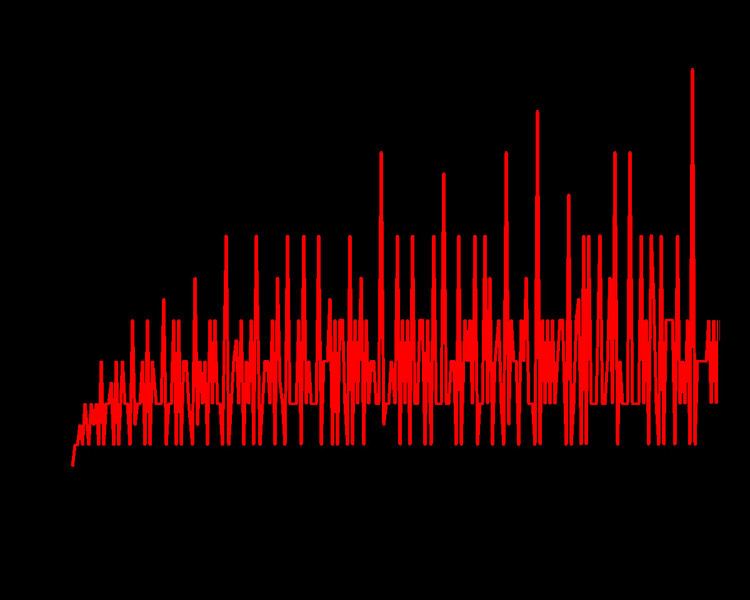 | ||
In mathematics, and specifically in number theory, a divisor function is an arithmetic function related to the divisors of an integer. When referred to as the divisor function, it counts the number of divisors of an integer. It appears in a number of remarkable identities, including relationships on the Riemann zeta function and the Eisenstein series of modular forms. Divisor functions were studied by Ramanujan, who gave a number of important congruences and identities; these are treated separately in the article Ramanujan's sum.
Contents
A related function is the divisor summatory function, which, as the name implies, is a sum over the divisor function.
Definition
The sum of positive divisors function σx(n), for a real or complex number x, is defined as the sum of the xth powers of the positive divisors of n. It can be expressed in sigma notation as
where
The aliquot sum s(n) of n is the sum of the proper divisors (that is, the divisors excluding n itself, A001065), and equals σ1(n) − n; the aliquot sequence of n is formed by repeatedly applying the aliquot sum function.
Example
For example, σ0(12) is the number of the divisors of 12:
while σ1(12) is the sum of all the divisors:
and the aliquot sum s(12) of proper divisors is:
Table of values
The cases x = 2 to 5 are listed in A001157 − A001160, x = 6 to 24 are listed in A013954 − A013972.
Properties
For a non-square integer, n, every divisor, d, of n is paired with divisor n/d of n and
For a prime number p,
because by definition, the factors of a prime number are 1 and itself. Also, where pn# denotes the primorial,
since n prime factors allow a sequence of binary selection (
Clearly,
The divisor function is multiplicative, but not completely multiplicative. The consequence of this is that, if we write
where r = ω(n) is the number of distinct prime factors of n, pi is the ith prime factor, and ai is the maximum power of pi by which n is divisible, then we have
which is equivalent to the useful formula:
It follows (by setting x = 0) that d(n) is:
For example, if n is 24, there are two prime factors (p1 is 2; p2 is 3); noting that 24 is the product of 23×31, a1 is 3 and a2 is 1. Thus we can calculate
The eight divisors counted by this formula are 1, 2, 4, 8, 3, 6, 12, and 24.
We also note s(n) = σ(n) − n. Here s(n) denotes the sum of the proper divisors of n, that is, the divisors of n excluding n itself. This function is the one used to recognize perfect numbers which are the n for which s(n) = n. If s(n) > n then n is an abundant number and if s(n) < n then n is a deficient number.
If n is a power of 2, for example,
As an example, for two distinct primes p and q with p < q, let
Then
and
where φ(n) is Euler's totient function.
Then, the roots of:
allow us to express p and q in terms of σ(n) and φ(n) only, without even knowing n or p+q, as:
Also, knowing n and either σ(n) or φ(n) (or knowing p+q and either σ(n) or φ(n)) allows us to easily find p and q.
In 1984, Roger Heath-Brown proved that the equality
is true for an infinity of values of n, see A005237.
Series relations
Two Dirichlet series involving the divisor function are:
which for d(n) = σ0(n) gives
and
A Lambert series involving the divisor function is:
for arbitrary complex |q| ≤ 1 and a. This summation also appears as the Fourier series of the Eisenstein series and the invariants of the Weierstrass elliptic functions.
Growth rate
In little-o notation, the divisor function satisfies the inequality (see page 296 of Apostol’s book)
More precisely, Severin Wigert showed that
On the other hand, since there are infinitely many prime numbers,
In Big-O notation, Peter Gustav Lejeune Dirichlet showed that the average order of the divisor function satisfies the following inequality (see Theorem 3.3 of Apostol’s book)
where
The behaviour of the sigma function is irregular. The asymptotic growth rate of the sigma function can be expressed by:
where lim sup is the limit superior. This result is Grönwall's theorem, published in 1913 (Grönwall 1913). His proof uses Mertens' 3rd theorem, which says that
where p denotes a prime.
In 1915, Ramanujan proved that under the assumption of the Riemann hypothesis, the inequality:
holds for all sufficiently large n (Ramanujan 1997). The largest known value that violates the inequality is n=5040. In 1984 Guy Robin proved that the inequality is true for all n > 5040 if and only if the Riemann hypothesis is true (Robin 1984). This is Robin's theorem and the inequality became known after him. Robin furthermore showed that if the Riemann hypothesis is false then there are an infinite number of values of n that violate the inequality, and it is known that the smallest such n > 5040 must be superabundant (Akbary & Friggstad 2009). It has been shown that the inequality holds for large odd and square-free integers, and that the Riemann hypothesis is equivalent to the inequality just for n divisible by the fifth power of a prime (Choie et al. 2007).
Robin also proved, unconditionally, that the inequality
holds for all n ≥ 3.
A related bound was given by Jeffrey Lagarias in 2002, who proved that the Riemann hypothesis is equivalent to the statement that
for every natural number n > 1, where
